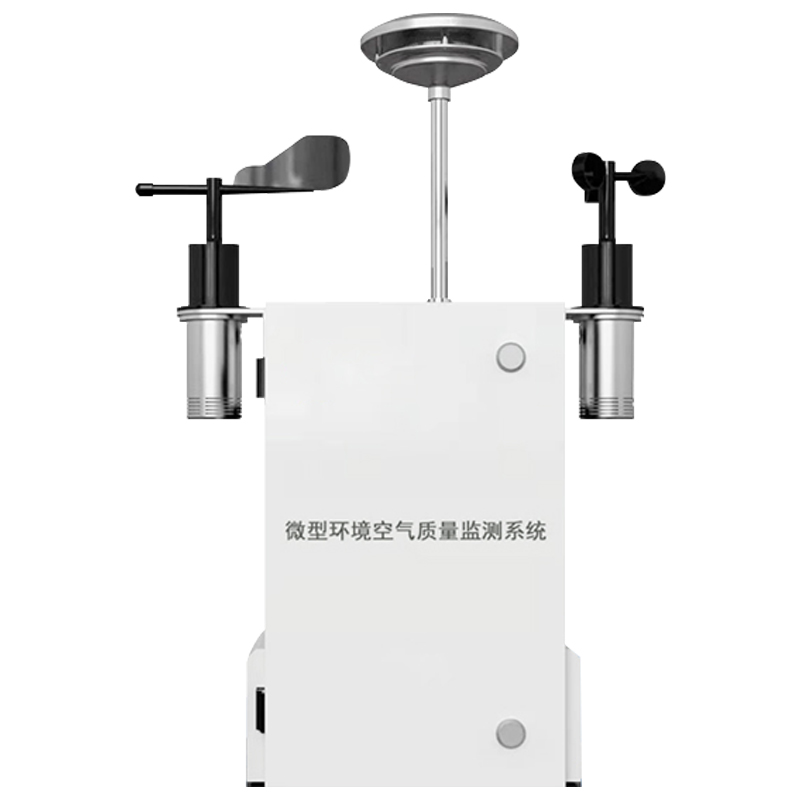Tianyi Sensor IOT Technology Co., Ltd
Sales Manager:Ms. Emily Wang
Cel,Whatsapp,Wechat:+86 15898932201
Email:info@fengtutec.com
Add:No. 155 Optoelectronic Industry Accelerator, Gaoxin District, Weifang, Shandong, China

Sales Manager:Ms. Emily Wang
Cel,Whatsapp,Wechat:+86 15898932201
Email:info@fengtutec.com
Add:No. 155 Optoelectronic Industry Accelerator, Gaoxin District, Weifang, Shandong, China
time:2025-09-22 08:52:05 source:Weather Station viewed:89 time
Currently, traditional environmental monitoring methods have some limitations: mainly point-based monitoring with scattered distribution, few online monitoring points, difficulty in accurately tracing pollution sources, and high cost of traditional air automatic monitoring stations. Therefore, the current countermeasures are to use micro-stations, grid-based supervision platforms, and environmental air quality big data centers to monitor and analyze air environment changes in real-time, achieving precise air pollution control. These micro-stations have short construction cycles, low investment, and great effectiveness, collecting abundant data. They can promptly detect short-term changes in ambient air within the grid, timely trace and lock pollution sources, and quickly dispose of them, further enhancing emergency early warning capabilities and disposal capabilities.
The aforementioned Atmospheric Environment Monitoring System is a small, multi-parameter air monitoring system.
Currently, the main pollutants affecting air quality are inhalable particulate matter (PM10), fine particulate matter (PM2.5), nitrogen dioxide (NO2), sulfur dioxide (SO2), ozone (O3), and carbon monoxide (CO).
These are also the monitoring targets of the Atmospheric Environment Monitoring System, which can also include monitoring of meteorological parameters (temperature, humidity, wind speed, wind direction, air pressure) or TVOC (total volatile organic compounds).
These monitoring stations form an online monitoring network covering the entire region through large-scale, high-density deployment, collecting data in real-time and uploading it to cloud platforms for visual display and analysis.
The Atmospheric Environment Monitoring System consists of the following components:
Power supply system: Can use municipal electricity or solar energy combined with lithium battery power supply to adapt to different scenarios.
Electronic control box: Contains transmission modules, temperature compensation, anti-cross-interference coefficients, etc.
Monitoring equipment: The core part, including gas sensors, particulate matter monitoring modules, etc.
Supporting components: Including poles, enclosures, etc., some with optional display screens.
The big data platform is responsible for data reception, storage, analysis, and display.
Its advantages include: lower construction and operation costs compared to traditional monitoring stations, facilitating large-scale deployment; ability to densely deploy points in different areas as needed to form a high-density monitoring network; providing minute-level real-time monitoring data conducive to rapid response to pollution incidents; and simultaneous monitoring of multiple pollutants and meteorological parameters.
Currently, monitoring stations are widely used in urban environmental monitoring/municipal environmental monitoring/mobile environmental monitoring/enterprise chemical parks/residential areas/schools/hospitals and other sensitive areas for air quality monitoring/park and forest environmental monitoring.
They can also be used for traffic pollution environmental monitoring, such as deploying points on the downwind side of important urban traffic intersections, major transportation hubs, and easily congested road sections to monitor road dust and motor vehicle exhaust emissions.

How to solve the problems of water pollution and water quality deterioration? Traditional manual sampling is time-consuming and lagging, but now there is a more efficient solution - the Water Quality Monitoring Buoy!As a key piece of equipment for water environment monitoring, its development precis...
In the fields of meteorology, environmental monitoring, agriculture, hydrology, transportation, and wind power generation, obtaining high-precision, high-time-resolution meteorological data for small-scale (microscale) areas is crucial. Traditional meteorological observation stations are usually lar...
Why measure the flow velocity of a river?First, it provides data support for water resources management. By mastering the river flow velocity, water resources can be rationally allocated to ensure the water demand for daily life and production.Second, it helps with flood control and disaster reducti...
The core of the Odor Online Monitor lies in simulating human olfactory perception, enabling simultaneous monitoring of multiple malodorous pollutants. It is particularly suitable for 24/7 continuous monitoring in environments such as landfill sites, chemical industrial parks, and wastewater treatmen...